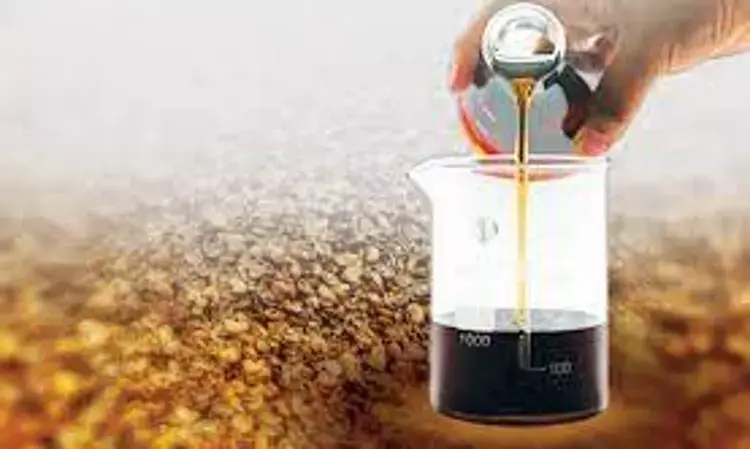- Home
- Medical news & Guidelines
- Anesthesiology
- Cardiology and CTVS
- Critical Care
- Dentistry
- Dermatology
- Diabetes and Endocrinology
- ENT
- Gastroenterology
- Medicine
- Nephrology
- Neurology
- Obstretics-Gynaecology
- Oncology
- Ophthalmology
- Orthopaedics
- Pediatrics-Neonatology
- Psychiatry
- Pulmonology
- Radiology
- Surgery
- Urology
- Laboratory Medicine
- Diet
- Nursing
- Paramedical
- Physiotherapy
- Health news
- Fact Check
- Bone Health Fact Check
- Brain Health Fact Check
- Cancer Related Fact Check
- Child Care Fact Check
- Dental and oral health fact check
- Diabetes and metabolic health fact check
- Diet and Nutrition Fact Check
- Eye and ENT Care Fact Check
- Fitness fact check
- Gut health fact check
- Heart health fact check
- Kidney health fact check
- Medical education fact check
- Men's health fact check
- Respiratory fact check
- Skin and hair care fact check
- Vaccine and Immunization fact check
- Women's health fact check
- AYUSH
- State News
- Andaman and Nicobar Islands
- Andhra Pradesh
- Arunachal Pradesh
- Assam
- Bihar
- Chandigarh
- Chattisgarh
- Dadra and Nagar Haveli
- Daman and Diu
- Delhi
- Goa
- Gujarat
- Haryana
- Himachal Pradesh
- Jammu & Kashmir
- Jharkhand
- Karnataka
- Kerala
- Ladakh
- Lakshadweep
- Madhya Pradesh
- Maharashtra
- Manipur
- Meghalaya
- Mizoram
- Nagaland
- Odisha
- Puducherry
- Punjab
- Rajasthan
- Sikkim
- Tamil Nadu
- Telangana
- Tripura
- Uttar Pradesh
- Uttrakhand
- West Bengal
- Medical Education
- Industry
Cashew nut shell liquids exhibit antibacterial activity for control of oral biofilms

Cashew nut shell liquids n-CNSL and t-CNSL exhibit antibacterial activity against oral strains on planktonic cells and biofilms, according to a recent study published in the Archives of Oral Biology.
The aim was to evaluate the antibacterial and antibiofilm activity of natural (n-CNSL) and technical (t-CNSL) cashew nut shell liquid against streptococci and enterococci related to dental caries and chronic apical periodontitis, respectively.
Minimum inhibitory concentrations (MIC) and minimal bactericidal concentration (MBC) were determined to assess the antimicrobial effect of both CNSLs (n-CSNL and t-CNSL) against S. oralis ATCC 10557, S. sobrinus ATCC 6715, S. parasanguinis ATCC 903, S. mutans UA 159 and E. faecalis ATCC 19433. The antibiofilm activity was evaluated by total biomass quantification, colony forming unit (CFU) counting and scanning electron microscopy (SEM). Furthermore, cytotoxic effect of the substances was evaluated on L929 and HaCat cell lines by MTS assay.
Results of the study are:
The n-CNSL and t-CNSL showed inhibitory and bactericidal effect against all strains tested in this study, with MIC and MBC values ranging from 1.5 to 25 μg/mL. Overall, both CNSLs showed significant reduction in biomass quantification and enumeration of biofilm-entrapped cells for the strains analyzed, in biofilm formation and preformed biofilms (p < 0.05). In biofilm inhibition assay, the t-CNSL and n-CNSL showed reduction in biomass and CFU number for all bacteria, except in cell viability of S. parasanguinis treated with t-CNSL (p > 0.05). Indeed, SEM images showed a reduction in the amount of biomass, bacterial cells and changes in cellular morphology of S. mutans.
In conclusion, both substances showed effective antibacterial and antibiofilm activity against the strains used in the study, except in viability of S. parasanguinis cells treated with t-CNSL.
Thus, the researchers concluded that n-CNSL and t-CNSL exhibited antibacterial activity against oral strains on planktonic cells and biofilms, as evidenced by the reduction of biomass and cell viability, except in viability of S. parasanguinis cells treated with t-CNSL. Overall, the cytotoxic values of substances on murine fibroblast and human keratinocytes are higher than MIC and MBC values observed. Therefore, the results of this study suggest that both substances derived from cashew nuts are potential therapeutic agents against infections caused by oral bacteria.
Reference:
Cashew nut shell liquids: Antimicrobial compounds in prevention and control of the oral biofilms by Nayara de Oliveira Souza et al. published in the Archives of Oral Biology.
https://www.sciencedirect.com/science/article/abs/pii/S0003996921002624
Dr. Shravani Dali has completed her BDS from Pravara institute of medical sciences, loni. Following which she extensively worked in the healthcare sector for 2+ years. She has been actively involved in writing blogs in field of health and wellness. Currently she is pursuing her Masters of public health-health administration from Tata institute of social sciences. She can be contacted at editorial@medicaldialogues.in.
Dr Kamal Kant Kohli-MBBS, DTCD- a chest specialist with more than 30 years of practice and a flair for writing clinical articles, Dr Kamal Kant Kohli joined Medical Dialogues as a Chief Editor of Medical News. Besides writing articles, as an editor, he proofreads and verifies all the medical content published on Medical Dialogues including those coming from journals, studies,medical conferences,guidelines etc. Email: drkohli@medicaldialogues.in. Contact no. 011-43720751


